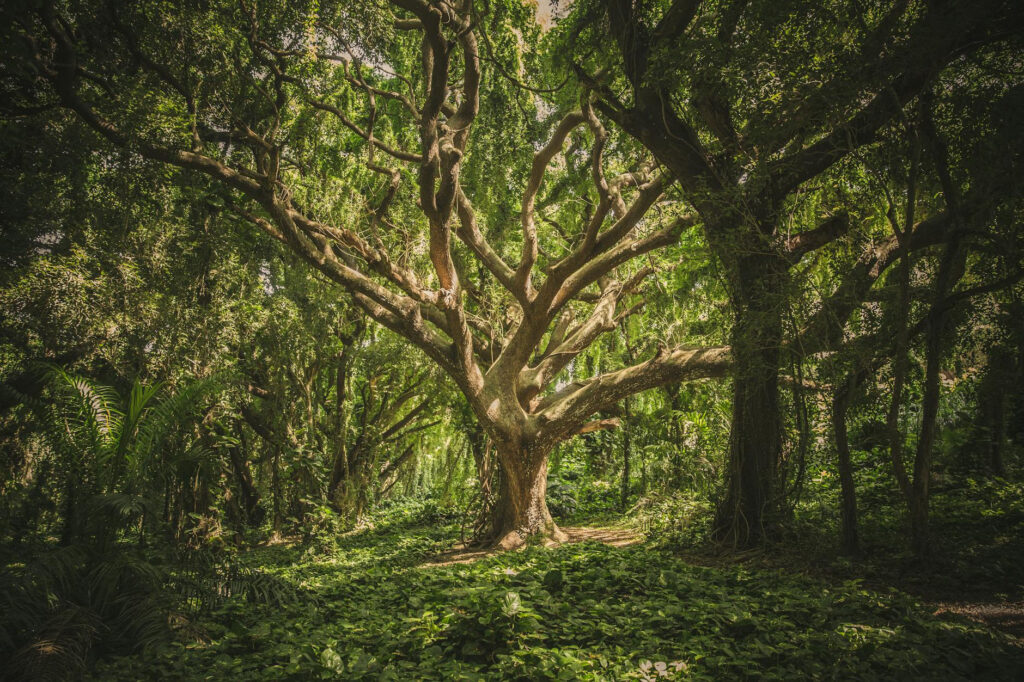Question: Several church authorities have claimed that those who are called Lamanites today, some of whose traditions resemble temple ordinances in the restored church of Jesus Christ, are a “dead branch”—that today those traditions have no essential value, and that indigenous peoples should simply join the church and put those things away. Does that accord with the scriptures, or is this a “precept of men”?
Answer: If true, that simplistic response ignores important scriptural details that throw light on the relationship between the LDS church and indigenous peoples. It is true that when the ancient Lamanites overthrew the Nephites whose iniquity had become full, that branch of the olive tree in Zenos’ allegory died: “And the wild fruit of the last had overcome that part of the tree which brought forth good fruit, even that the branch had withered away and died” (Jacob 5:40).
In other words, the Nephites ceased to exist as a distinct nation or people, and all who survived their destruction would now be identified as Lamanites: “The Lamanites have hunted my people, the Nephites, down from city to city and from place to place, even until they are no more; and great has been their fall; yea, great and marvelous is the destruction of my people, the Nephites” (Mormon 8:7). And yet, though “there are none save it be the Lamanites and robbers that do exist upon the face of the land” (Mormon 8:9), “many of our brethren have deserted over unto the Lamanites, and many more will also desert over unto them” (Mormon 9:24).
That scenario, however, was confined mostly to what was called the Land Southward and its environs (Mormon 3:1–5:7), whereas over several centuries many communities of Nephites had migrated to the Land Northward. Those communities, moreover, kept their own records: “There are many records kept of the proceedings of this people, by many of this people, which are particular and very large, concerning them. . . . Behold, there are many books and many records of every kind, and they have been kept chiefly by the Nephites” (Helaman 3:13, 15).
Those northern records, therefore, account for a revelation through the prophet Joseph Smith that distinguishes between different end-time categories of Lehi’s descendants: “Inasmuch as the knowledge of a Savior has come unto the world, through the testimony of the Jews, even so shall the knowledge of a Savior come unto my people—And to the Nephites, and the Jacobites, and the Josephites, and the Zoramites, through the testimony of their fathers” (Doctrine & Covenants 3:17; cf. 4 Nephi 1:35–38). That is, through their own records and traditions that the northern communities kept and still preserve to this day—not through the Book of Mormon.
As for the Book of Mormon, that record was explicitly written for those of Lehi’s descendants who had “dwindled in unbelief”: “And this testimony [that is, the Book of Mormon] shall come to the knowledge of the Lamanites, and the Lemuelites, and the Ishmaelites, who dwindled in unbelief because of the iniquity of their fathers” (Doctrine & Covenants 3:18); “Wherefore, it is an abridgment of the record of the people of Nephi, and also of the Lamanites—Written to the Lamanites, who are a remnant of the house of Israel” (Book of Mormon Title Page).
The Nephite identity of many indigenous peoples today may also account for the end-time descendants of Lehi being identified as Nephites, not as Lamanites: “And it shall come to pass that the Jews shall have the words of the Nephites, and the Nephites shall have the words of the Jews; and the Nephites and the Jews shall have the words of the lost tribes of Israel; and the lost tribes of Israel shall have the words of the Nephites and the Jews. And it shall come to pass that my people, which are of the house of Israel, shall be gathered home unto the lands of their possessions; and my word also shall be gathered in one. . . .” (2 Nephi 29:13–14).
If ancient records from any source—including Nephites in the Land Northward—can definitively be identified as scripture, shall they not be honored as are those of other natural branches and not rejected or even opposed? “. . . . And I will show unto them that fight against my word and against my people, who are of the house of Israel, that I am God, and that I covenanted with Abraham that I would remember his seed forever” (2 Nephi 29:14). Who is to say that such records containing God’s word are not to come forth in his own due time (1 Nephi 13:39–42)?
If the Gentiles—who have no spiritual heritage except through the house of Israel—“boast against the [natural] branches” (Romans 11:1–36)—in this case, against Nephites who remain to this day—what claim have they over the natural branches who are grafted back into their mother tree (Jacob 5:52)? Surely, such grafting isn’t through a directive to give up sacred traditions and join the church but rather through diligent nurture by God’s servants, the Gentiles’ spiritual kings and queens (Isaiah 49:22–23; Jacob 5:61; cf. 2 Nephi 10:7–9). In the end, those are the Gentiles who are “numbered among the house of Israel,” not the other way around (2 Nephi 10:18).












